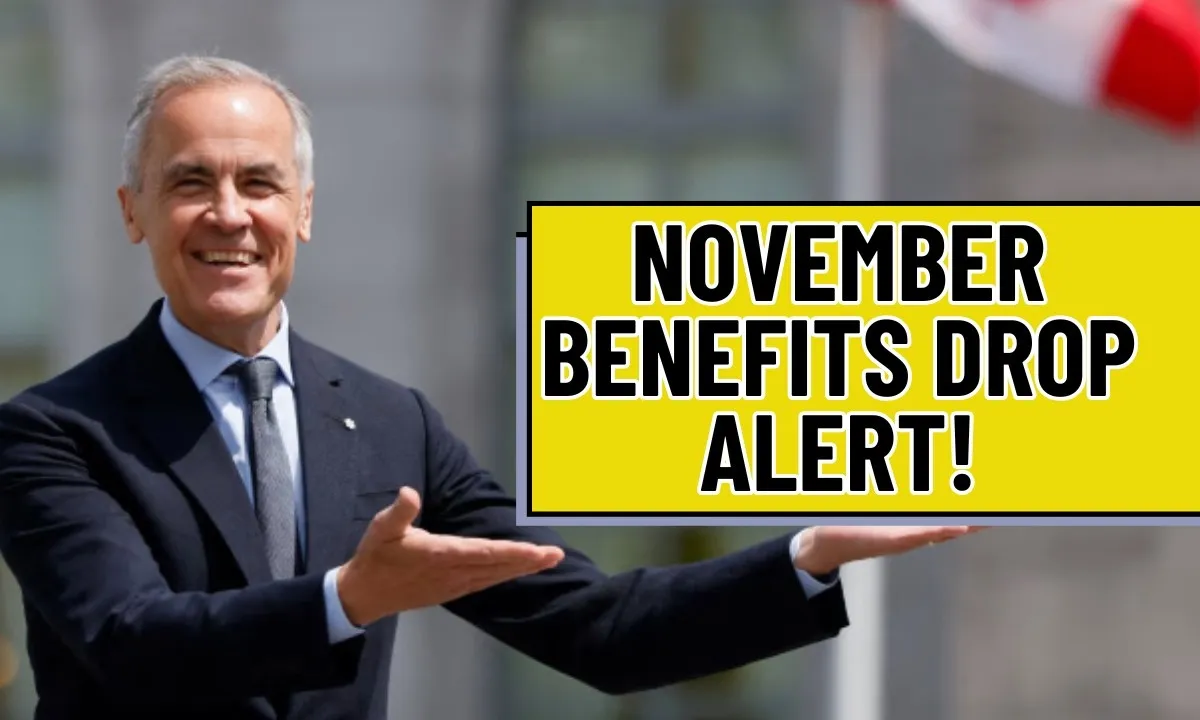Canada is officially stepping into a new era of retirement planning, and the change is bigger than anything seen in decades. Starting November 10, 2025, the long-standing rule that pushed Canadians toward retiring at 65 will be replaced with a much more flexible system. Instead of a single age limit that applied to everyone, the government is now giving Canadians the freedom to decide when they want to retire based on their own health, financial comfort, lifestyle, and future plans. This change has been introduced to better reflect the realities of life today people are living longer, working differently, and managing financial priorities in ways that didn’t exist years ago. The government realized that a fixed age no longer makes sense in a country where everyone’s situation is truly different.
Table of Contents
Why Canada Removed the Fixed Age of 65
For generations, the age of 65 was seen as the universal finish line for working life, mostly because CPP and OAS were structured around it. But in today’s world, Canadians are living healthier and more active lives well into their 70s and even 80s. Many people continue working part-time, consulting, freelancing, or running small businesses long after they turn 65, not because they have to, but because they want to stay active or secure more financial freedom. At the same time, others face health challenges, caregiving responsibilities, or physically demanding jobs that make early retirement a better option. Because of this wide variety of situations, the government decided that it is no longer realistic or fair to expect everyone to retire at one exact age. This policy update ensures that retirement becomes a personal decision instead of a government-set milestone.
How CPP and OAS Will Change Under the New Rules
The shift to a flexible retirement system also changes how Canada Pension Plan (CPP) and Old Age Security (OAS) payments will work. Instead of having benefits tied to the age of 65, the new system allows Canadians to choose when they want their benefits to start based on what works best for them. This approach gives individuals much more control over how much they receive, how long they work, and how they plan financially for the years ahead. Canadians who wish to retire early can still do so, but they will receive smaller monthly payments, while those who choose to delay retirement will benefit from higher monthly payouts. It’s a system designed to reward people who continue contributing to the workforce, while still supporting those who need earlier access.
Old vs New Retirement System in Canada
| Factor | Before Nov 2025 | After Nov 2025 |
|---|---|---|
| Retirement Age | Set at 65 | Fully flexible |
| CPP Start | Only at 65 | Early (reduced) or delayed (increased) |
| OAS Start | Always 65 | Can access earlier or defer |
| Work Beyond 65 | Limited benefits | Bigger rewards for continuing work |
| Policy Style | Standardized | Personalized and adaptable |
This new structure is expected to help Canadians create smoother financial transitions, whether they want to retire early, keep working long-term, or gradually reduce their work hours over time.
What This Means for Canadians Preparing for Retirement

For many Canadians, this change will make retirement planning easier and far more realistic. People who enjoy working longer such as teachers, consultants, healthcare workers, engineers, small business owners, and skilled trades professionals can now continue contributing without worrying about losing benefits or missing out on income. Their additional years of work will help increase retirement payouts, making long-term planning more stable. On the other hand, Canadians who face physical demands, rising medical needs, or financial pressure will still have the option to retire early, giving them flexibility without breaking any rules. In simple terms, this reform respects that retirement is not a single moment that fits everyone it is a personal journey that should be shaped by your own goals and circumstances rather than old government standards.
Why the Government Supports This Reform
According to insights shared across official Canada.ca announcements, the federal government introduced this reform to keep the pension system strong for future generations. With a rapidly aging population, longer life expectancy, and shifting work habits, Canada needed a system that no longer relies on old assumptions. Removing the fixed age makes the pension model more modern, sustainable, and fair. It also helps people who want to remain in the workforce while easing pressure on government pension funding, ensuring that CPP and OAS remain stable for decades to come.
Additional Financial Support for Canadians With Disabilities
Along with this major retirement update, the government has also announced a one-time $150 payment for low-income individuals who qualify under the Canada Disability Benefit. This payment is intended to help with rising living costs, medical care, specialized equipment, and everyday expenses. Once Parliament approves the final legislation, payments will be automatically issued to all eligible Canadians. For more details on eligibility or application, individuals can refer to the official resources on Canada.ca.
Key Points to Remember
Here are the essential highlights of the new retirement system in one place:
- The mandatory retirement age of 65 will no longer apply from November 10, 2025.
- CPP and OAS can now start earlier or later based on personal decision-making.
- Retiring later results in higher monthly pension amounts.
- Early retirement remains available, but with reduced payouts.
- The new system encourages continued employment for those who want it.
A New Beginning for Retirement in Canada
This policy marks a turning point for millions of Canadians who are planning their next chapter. With the fixed age removed, retirement becomes a matter of personal choice something shaped by your lifestyle, income needs, health, family commitments, and long-term dreams. The government’s goal is to make retirement more flexible, more financially secure, and more reflective of today’s reality. As Canada steps into this new era, the simple idea of “retiring at 65” is becoming a thing of the past, replaced by a system that gives every individual the freedom to choose the retirement path that works best for them.
FAQs
- What exactly changes after November 10, 2025?
The fixed retirement age of 65 will be removed, allowing Canadians to choose when they want to retire and when they want their CPP or OAS to begin. - Will retiring later increase my benefits?
Yes. Delaying retirement increases the monthly amount you receive from both CPP and OAS, offering a strong incentive to work longer. - Can I still retire early if I want to?
Absolutely. Early retirement remains an option, but payments will be lower since benefits will be spread over a longer period. - Do I need to apply differently under the new system?
The application process stays similar, but you’ll have more timing choices. Official instructions will be updated on Canada.ca as the reform period approaches.



